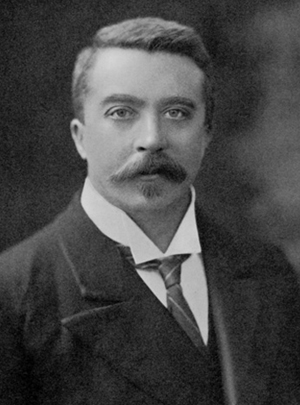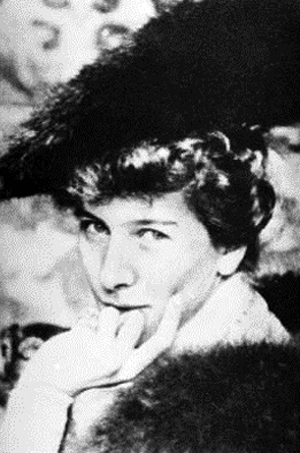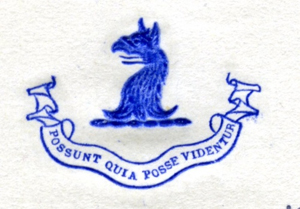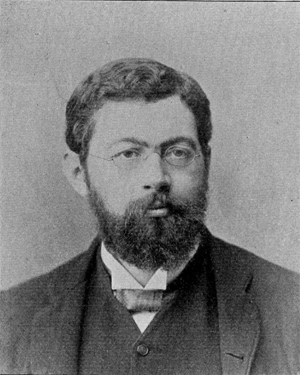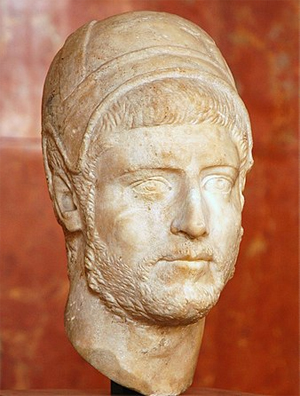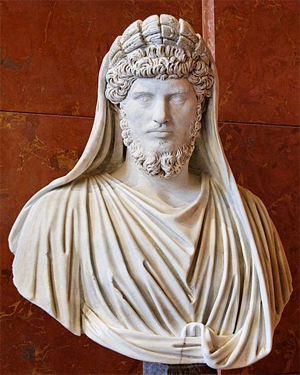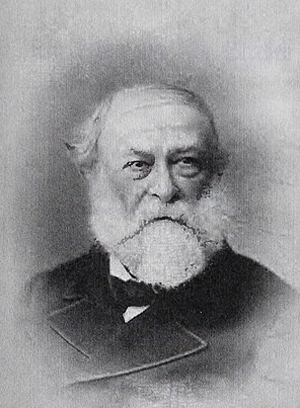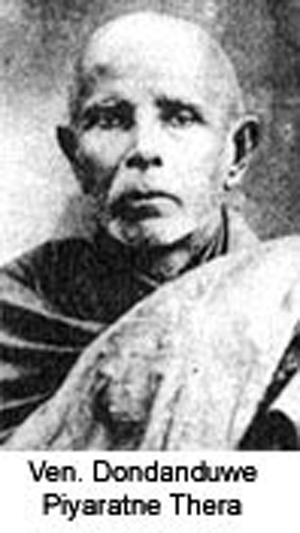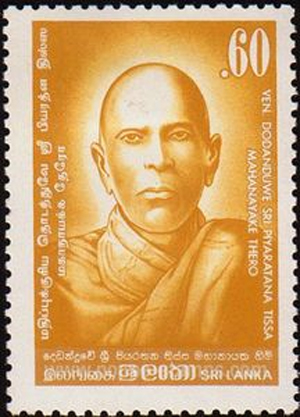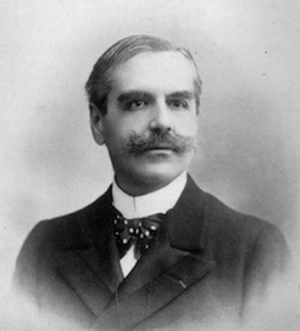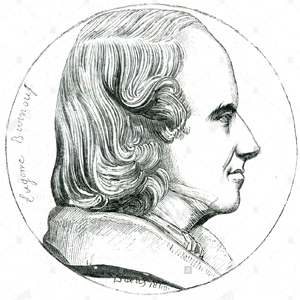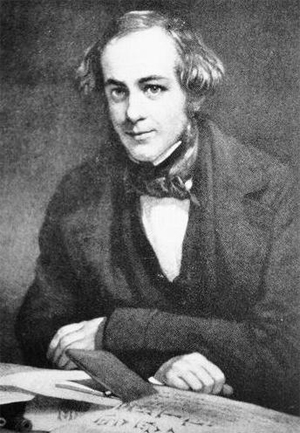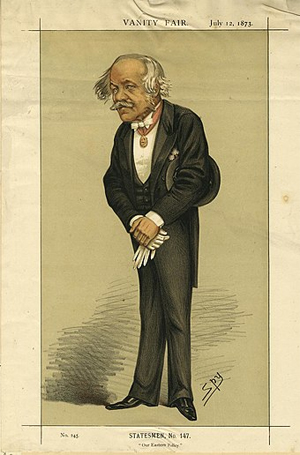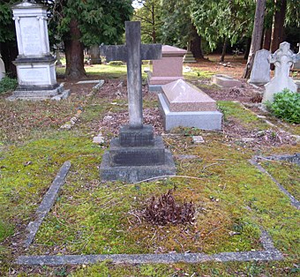by Theosophy Wiki
Accessed: 8/19/20
Consul Gustav Gebhard (August 18, 1828, at Elberfeld to May 6, 1900 in Berlin) was a German Theosophist whose home was frequently visited by H. P. Blavatsky, Col. Olcott, and others.
See also Gebhard Family.
Personal life
Gustav Gebhard was the eldest son of Franz-Joseph Gebhard, President of the Board of Trade, at Elberfeld, Germany.
He owned a silk manufacturing factory in his native city, was co-founder of the German Bank and of the Bergisch-Märkische Bank, and Persian Consul. He acquired much of his business experience travelling abroad, lived in Paris and London, and made trips to the U.S.A., Constantinople and Asia Minor. On his first journey to America, he met in New York Mary L’Estrange whom he married on September 4, 1852.[1] The newly-married couple settled in Elberfeld, Germany, where their seven children were eventually born.[2]
Noted as a linguist, he spoke French and English without accent. A far-sighted business-man, he was also known for his warm hospitality, broad-mindedness, and readiness to help others, even when their views differed from his own.
Involvement with Theosophical Society
On July 27, 1884, the Germania Theosophical Society was organized at his home at Elberfeld, Platzhoffstrasse 12, with Dr. Wilhelm Hübbe-Schleiden as President, his wife Mary as Vice-President, and his son Franz Gebhard as Corresponding Secretary. All the members of the Gebhard family, except their daughter, joined the Theosophical Society.
On August 17, H. P. Blavatsky, Col. Olcott, Mohini Chatterjee and Babaji, who were in Europe, went to Elberfeld and stayed with the Gebhards until October. During this time their home became the center of Theosophical activities. While Gustav was of course the official host during these visits, the most dynamic personality of the household was Mary, who combined refinement and culture with rare capacities for occult studies. On August 25, 1884, Gustav received a letter from Master K.H.
A couple of years later, in May and June, 1886, Mme. Blavatsky stayed with the Gebhards again.
Online resources
• A Letter from Mahatma Koot Hoomi to Gustav Gebhard at Blavatsky Archives Online.
Notes
1. "Mary L'Estrange" in the New York City, Compiled Marriage Index, 1600s-1800s. This source gives the date as September 8.
2. Helena Petrovna Blavatsky, Collected Writings vol. VI (Wheaton, IL: Theosophical Publishing House, 19898), 434.
****************************
Mary Gebhard
by Theosophy Wiki
Accessed: 8/20/20
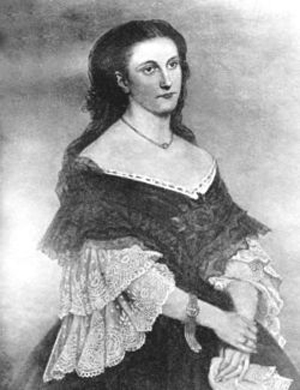
Mary Gebhard
Frau Mary Gebhard (née L’Estrangge) (1832 - December 15, 1892) was the wife of Consul Gustav Gebhard, and an active member of the Theosophical Society. The first Theosophical Lodge in Germany, the Germania Theosophical Society, was formed and met in her house, and H. P. Blavatsky stayed with her on two occasions. She received a few letters from the Masters of Wisdom and saw the astral form of Master M.
See also Gebhard Family.
Early Life
Mary was the only daughter of the British Major Thomas L’Estrange (of the 36th Reg.), who belonged to the Protestant branch of this old family, descending from Rollo, First Duke of Normandy. He had married a Catholic Irish lady, Sarah Egan, which brought about strained relations with his family. Mary never met any relatives on her father’s side. At the conclusion of the Spanish campaign against Napoleon, her father had gone to Paris, where Mary was educated at the Sacré Coeur, and presented at the Court. Having lost his property, her father left for Canada, where he bought some land near Montreal. After his death in 1850, her mother sold the land and went to the U.S.A. with Mary.[1]
She met Gustav Gebhard in New York, on his first journey to America, and married him on September 4, 1852, the ceremony being performed according to both the Catholic and the Protestant rites.[2] The newly-married couple settled in Elberfeld, Germany. They eventually formed a family of seven children.
Theosophical work
Mary Gebhard was not too happy living in a small town. Owing to the many business trips of her husband, she was left very much to herself. She had an inborn inclination towards philosophical and occult subjects, and studied Hebrew with a clergyman, to become fitted for independent research in the Kabbalah. She made the acquaintance of the Abbé Alphonse Louis Constant, who, under his pseudonym of Éliphas Lévi, wrote well-known occult works, and remained his pupil until his death in 1875. She visited him several times in Paris, and he visited the Gebhards twice in Elberfeld.[3]
After the death of Éliphas Lévi, Mary sought other occult connections. She heard of the Theosophical Society, and after an exchange of letters with Col. Olcott, became a member of the Society on February 10, 1883.[4]
In one of his letters of 1883, Master K.H. wrote about her:
Hers is a genuine, sterling nature; she is a born Occultist in her intuitions and I have made a few experiments with her — though it is rather M.'s duty than my own.[5]
On April 7, 1884, while in a meeting of the London Lodge, she saw the astral form of Master M. She later reported:
On the 7th of April last, being, at a meeting of the Theosophical Society at Mr. Finch’s rooms, Lincoln’s Inn, I had a vision, in which I saw the Mahatma M. At the moment I was listening attentively to Colonel Olcott’s opening speech to the Society. I saw standing on my right side, a little in front, a very tall, majestic-looking person, whom I immediately recognised to be the Mahatma, from a picture I had seen of him in Mr. Sinnett’s possession. He was not clad in white, but it seemed to me to be some dark material with coloured stripes, which was wound round his form. The vision lasted only a few seconds. As far as I could learn, the only persons besides myself who had seen the Mahatma were Colonel Olcott, Mr. Mohini, and, of course, Madame Blavatsky.[6]
On July 27, 1884, the Germania Theosophical Society was organized at their home at Elberfeld, Platzhoffstrasse 12, with Dr. Wilhelm Hübbe-Schleiden as President, Mary as Vice-President, and Franz Gebhard as Corresponding Secretary. All the members of the Gebhard family, except their daughter, joined the Theosophical Society.
On August 17, H. P. Blavatsky, Col. Olcott, Mohini Chatterjee and Babaji, who were in Europe, went to Elberfeld and stayed with the Gebhards until October. During this time their home became the center of Theosophical activities. While Consul Gustav Gebhard was of course the official host during these visits, the most dynamic personality of the household was Mary, who combined refinement and culture with rare capacities for occult studies.
Later that month, on August 30th, Mahatma Morya wrote a letter to Mrs. Gebhard challenging her to accept her destiny. It was published as Letter 72 in Letters from the Masters of the Wisdom Second Series. This is not the first letter she received. There were at least two related to Laura C. Holloway in 1882. Those have been published as Letter 25 and Letter 26 in Mrs. Holloway and the Mahatmas. Mrs. Gebhard may have received additional letters that remained private.
A couple of years later, in May and June, 1886, Mme. Blavatsky stayed with the Gebhards again.
Later years
Her sons Hermann and Walther were identical twins, and they both shot themselves: Hermann on March 16, 1881, and Walther on April 10, 1886. Regarding the death of the latter, Mme. Blavatsky wrote the following to Babaji:
ON Saturday — April the 10th, Walter Gebhard was found dead in his bed, having shot himself without any reason and no cause, his things packed up and ready to start home. The fiends of rage, of vindictiveness, malice, and hatred let loose by you in their home have fastened on the poor boy you boasted to influence so forcibly, and have done their work. It is not his twin brother who committed suicide five years ago who influenced him. Herman's astral form is in Deva Chan, sleeping to the day his natural death would have summoned him. It is a host of the Pisachas of murder and post mortem criminal impulses who, copying from the record in the astral light around him of his brother's kind of death, led him to shoot himself during a state of somnambulic unconsciousness and irresponsibility. He is the first victim of your wicked father's son, and your grandmother's worthy grand-son.[7]
Mary's vital strength was sapped as a result of the suicide of both of her twin-sons. After several strokes, she passed away on December 15, 1892. Her remains were cremated.
Notes
1. Helena Petrovna Blavatsky, Collected Writings vol. VI (Wheaton, IL: Theosophical Publishing House, 19898), 434.
2. "Mary L'Estrange" in the New York City, Compiled Marriage Index, 1600s-1800s. This source gives the date as September 8.
3. Helena Petrovna Blavatsky, Collected Writings vol. VI (Wheaton, IL: Theosophical Publishing House, 19898), 434.
4. Theosophical Society General Membership Register, 1875-1942 at http://tsmembers.org/. See book 1, entry 1647 (website file: 1A/51).</
5. Vicente Hao Chin, Jr., The Mahatma Letters to A.P. Sinnett in chronological sequence No. 117 (Quezon City: Theosophical Publishing House, 1993), 403.
6. A Casebook of Encounters with the Theosophical Mahatmas Case 43, compiled and edited by Daniel H. Caldwell
7. A. Trevor Barker, The Letters of H. P. Blavatsky to A. P. Sinnett Letter No. 152, (Pasadena, CA: Theosophical University Press, 1973), ???.
Online resources
Articles
• Mary Gebhard at Theosopedia.
• The Gebhard family published in the Blavatsky Collected Writings, Vol. VI
• A Short Letter from Mahatma Koot Hoomi to Mary Gebhard published by Blavatsky Study Center.
****************************
Gebhard Family
by Theosophy Wiki
Accessed: 8/20/20
The German Family played an important role in the history of the Theosophical Society. According to Readers Guide to The Mahatma Letters to A. P. Sinnett:
Gebhard Family, a German family living in Elberfeld, quite prominent in the early history of the TS in Europe. The family consisted of Gustav Gebhard, Mme. M. Gebhard, and sons Franz and Arthur. For full description see biographical sketch by Boris de Zirkoff in HPB VI: 434 and D, p. 592. ML index; SH index. [1]
According to the Collected Writings vol. VI:
The Gebhard Family had six sons and one daughter:
1. Franz Gustav: b. July 1, 1853; d. April 29, 1940. Married Aline Jordan, by whom he had three daughters (no issue), and a son, Kurt Alfred Thomas (b. June 27, 1881), who died as lieutenant in France, 1914. His son, Dr. Torsten Friedrich Franz (b. March 12, 1909), is at present an art-historian in Münich, and is unmarried.
2. Fritz: b. July 15, 1854; d. July 6, 1855.
3. Arthur Henry Paisley: b. Dec. 29, 1885 (sic, 1855); d. at Newton-Abbot, England, Oct. 11, 1944. After an earlier marriage, he married a widow, Marie-Josephe von Hoesch, née von Carlowitz (b. Jan. 7, 1888; now residing in Germany), by whom he had two sons: Rollo, b. July 7, 1921, married to Hildegard Freyer (no issue); and Vidar Arthur Eward, b. Oct. 2, 1928, when his father was already 73 years of age. In 1913, Arthur Gebhard added officially to his own name that of his mother’s family, and became known as Gebhard-L’Estrange. He took out American citizenship in Boston, 1878. For some 25 years, he represented his father’s factory in New York, and was during part of that time on close friendly terms with Mohini M. Chatterjee and William Quan Judge, with whom he was in partnership for a while, publishing The Path magazine. He took active part in the Theosophical Movement, lecturing on Oriental philosophy. He frequently came to Europe to visit his relatives as well as H.P.B., and was one of the first patrons of Wagner’s musical dramas, at Bayreuth, Bavaria, recognizing their occult significance.
At one time, he fell under the influence of Mohini M. Chatterjee, who was then in a very critical mood, and drew up in collaboration with him what H.P.B. called a “Manifesto,” entitled, “A Few Words on The Theosophical Organization,” which contained a rather severe criticism of Col. Olcott for alleged despotism. H.P.B. wrote a powerful reply, embodying an outspoken defense of him, and a statement on the basic platform of the T.S. and its policies. For lack of any definite title, it has been called at some later date, “The Original Programme of The Theosophical Society,” which it unquestionably represents. Neither the challenging “Manifesto” nor H.P.B.’s Reply were published at the time. They were later issued in booklet form, with an Introduction by C. Jinarâjadâsa (Adyar: Vol. VII of the present Series), together with all pertinent historical data which form their background. As far as is known, this little “tempest in a tea-pot” eventually blew itself out, and nothing more was heard of it.
Much later in life, namely, in 1940, Arthur Gebhard published a little book entitled The Tradition of Silence, in which he paid tribute to H.P.B. and her work.
4. Rudolf Ernst: b. Dec. 31, 1857; d. In 1935. As a friend of T. Subba Row, stayed for a while in India, where he went with Col. Olcott, in October, 1884. His son, Wolfgang, is still living in the U.S.A.
5. Mary: b. Sept. 13, 1859; d. in June, 1944. Married to Paul von Ysselstein, but had no issue.
6 and 7. Hermann and Walther, identical twins, born Oct. 16, 1866. Both shot themselves: Hermann on March 16, 1881, and Walther on April 10, 1886. See in connection with these tragic events, and their occult background and implications, The Letters of H.P. Blavatsky to A.P. Sinnett, pp. 145, 299, 300-301.[2]
Notes
1. George E. Linton and Virginia Hanson, eds., Readers Guide to The Mahatma Letters to A. P. Sinnett (Adyar, Chennai, India: Theosophical Publishing House, 1972), 231-232.
2. Helena Petrovna Blavatsky, Collected Writings vol. VI (Wheaton, IL: Theosophical Publishing House, 19898), 435-436.

